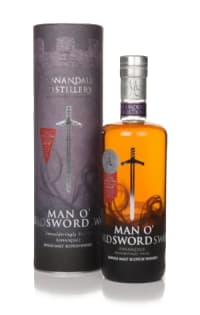

Let us know your thoughts on a product or view reviews from others. Please note that CasKompare does not verify whether the user has used or purchased the product.
| Name | Annandale Man O’sword Vintage 2017 S.t.r. Cask (Cask 375) |
|---|---|
| Brand | Annandale |
| Average Price | £80.95 |
| Type | Scotch Whisky |
| Region | Lowland Whisky |
| Volume | 700ml |
|---|---|
| Alcohol Content (ABV) | 60.5% |
| Country of Origin | Scotland |
| Created On CasKompare | 07-19-2023 |
Order Now: Experience the smooth taste and rich aroma of Annandale Scotch Whisky by ordering your 700ml bottle today With an ABV of60.5, this premium whisky is the perfect addition to any collection or for sharing with friends. Order now.
We were curious to learn why there were so few whiskey distilleries in the South of Scotland right away. At the time (2006–2007), Bladnoch Distillery (located close to Newton Stewart, Wigtownshire), had been shuttered for about 90 years and was in the extremely sad process of going out of business. The only operating whiskey distilleries in the South of Scotland were William Grant's massive grain distillery at Girvan and Diageo's Glenkinchie Distillery to the east of Edinburgh (although neither of these are truly southern in a strictly geographic sense). In the past, the Scottish Borders had been home to two more distilleries, Glen Tarras and Langholm, but both had stopped operating in the early 1900s. When looking for an answer, it becomes clear right away that South West Scotland's environment would have been too wet to support the cultivation of the barley varieties used 100 to 150 years ago. But if not, there would have been plenty of water, peat, and coal, and the wet and warm weather would have been perfect for whiskey maturation. Additionally, Southern Scotland had a developed rail system by the 1890s, which should have made moving finished whiskey out and imported barley into the region quite simple. (Any difficulties faced by South of Scotland distillers must have been insignificant in comparison to those experienced by Islay distillers.) This forced us to the unavoidable conclusion that Southern Scotland could and should create first-rate Single Malt Scotch whiskey, and that there isn't and probably never has been a fundamental reason why it couldn't or shouldn't. There was definitely something to prove!